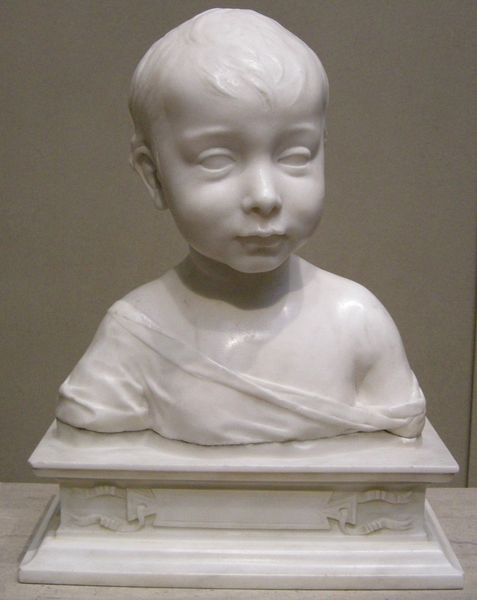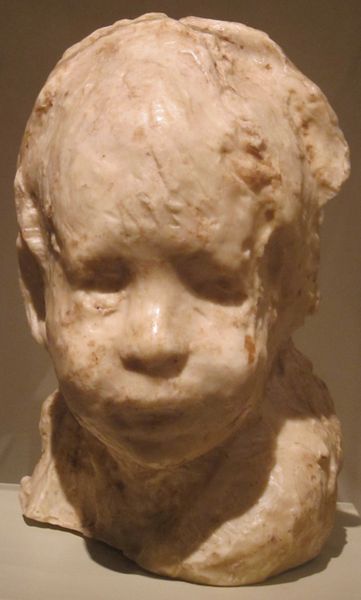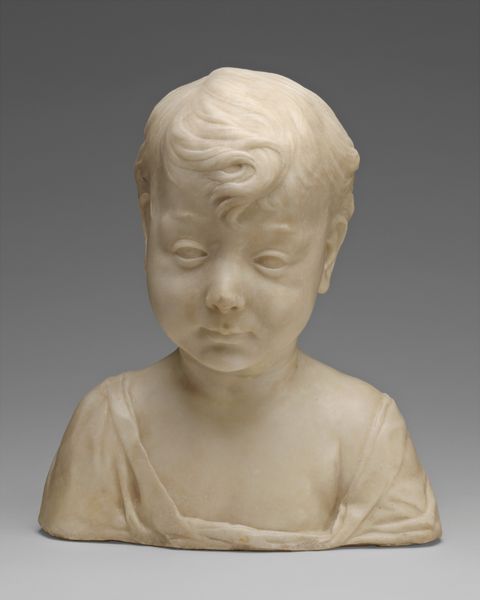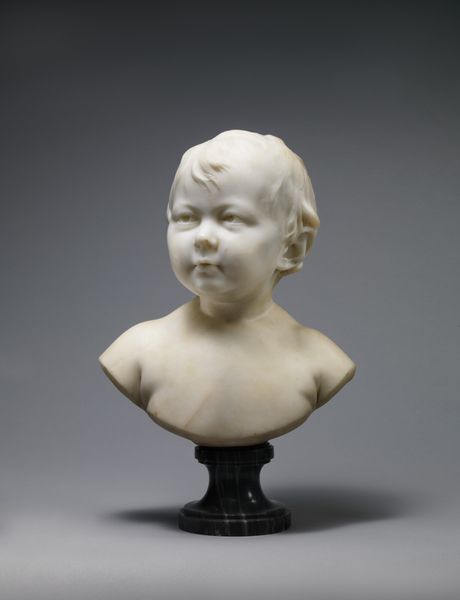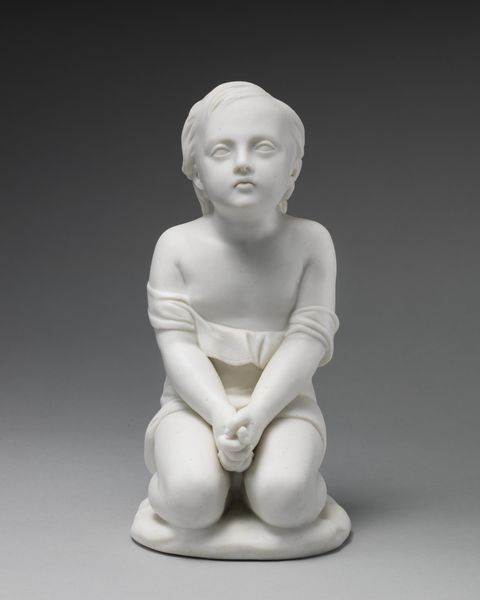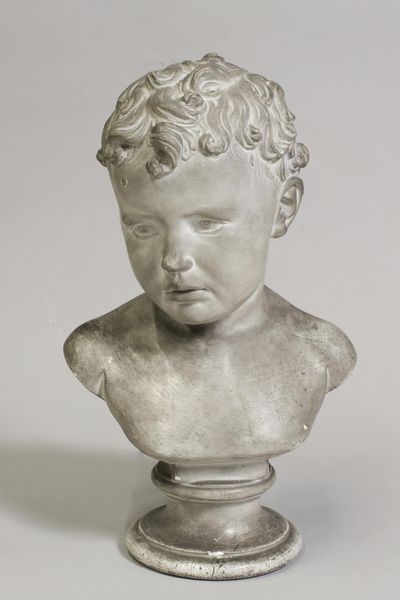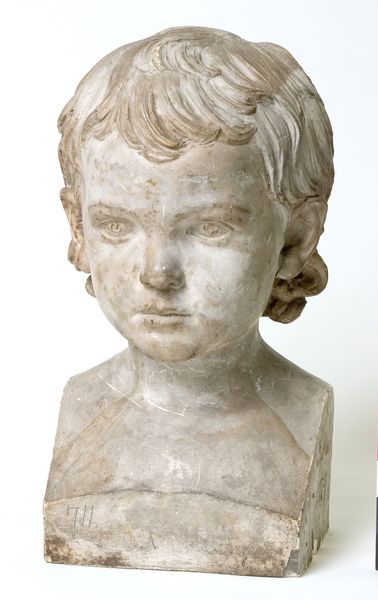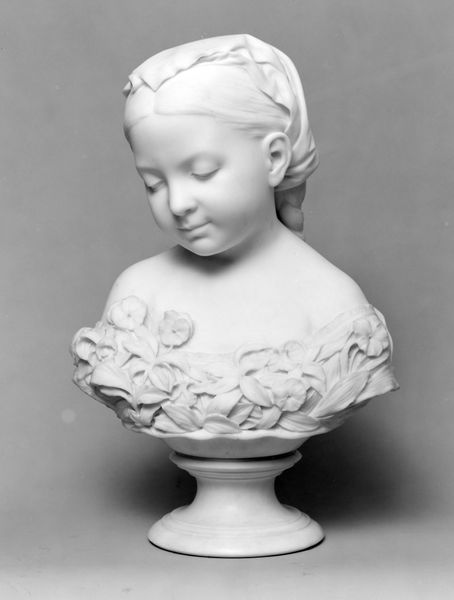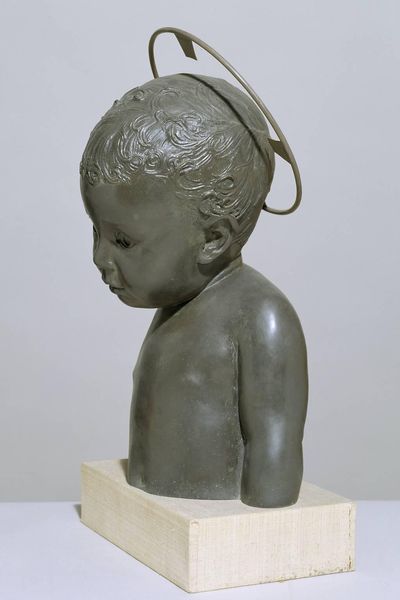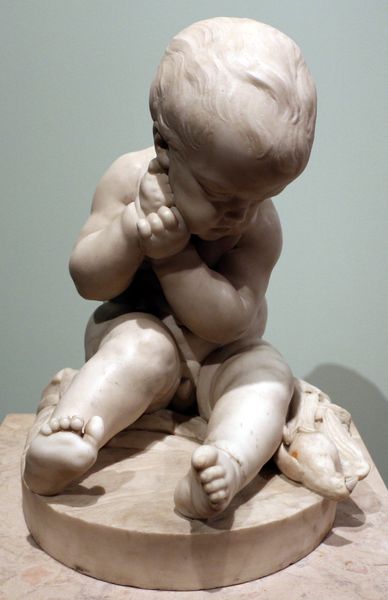
sculpture, marble
#
portrait
#
statue
#
head
#
sculptural image
#
figuration
#
sculpture
#
marble
#
italian-renaissance
#
realism
Copyright: Public domain
Curator: Look at this marble bust, "Laughing Boy" by Desiderio da Settignano, created around 1460 during the Italian Renaissance. Editor: The smoothness is arresting. He's positively beaming; it almost feels inappropriate for a formal portrait. Is he defying expectations of Renaissance sculpture? Curator: Absolutely. We need to situate this exuberance. Think about the context: Renaissance Florence was rapidly changing, shifting from strict religious depictions toward humanism and an interest in individualized portraiture. It reflects the patron’s status as well. Editor: Let's also consider the stone. Working with marble at that time demanded serious skill and physical effort. Carving a child's laughing face… it’s a display of power and affluence. The gleam that comes from marble creates the appearance of a light filled face. It required significant access to both the raw material and skilled labor. Curator: Precisely, but it’s not simply about skill. The child, presumably of an elite family, is idealized yet grounded in reality, signifying a period of optimism and wealth. Consider the rise of banking families like the Medici and their patronage of the arts. Editor: This kind of effusive depiction also hints at the growing societal value placed on childhood. You know, how children began to be considered individuals and how a specific material can speak about cultural attitude regarding identity. Curator: True. But the boy’s class is central. For poorer children in Florence, life would have been a struggle. "Laughing Boy," therefore, becomes a potent symbol of privilege and the promise – often unrealized for most – of the Renaissance ideal. Editor: Analyzing the stone, thinking of the production—from quarry to commission, from rough block to laughing child—reveals economic and social structures operating beyond the frame. It all works together to enhance the lifelike joy the artist portrayed. Curator: Indeed, viewing him from intersectional lenses exposes more than just his singular mirth, inviting critical reflection. Editor: An engaging sculpture! A stone carved with human spirit and speaking volumes beyond what we see initially.
Comments
No comments
Be the first to comment and join the conversation on the ultimate creative platform.

